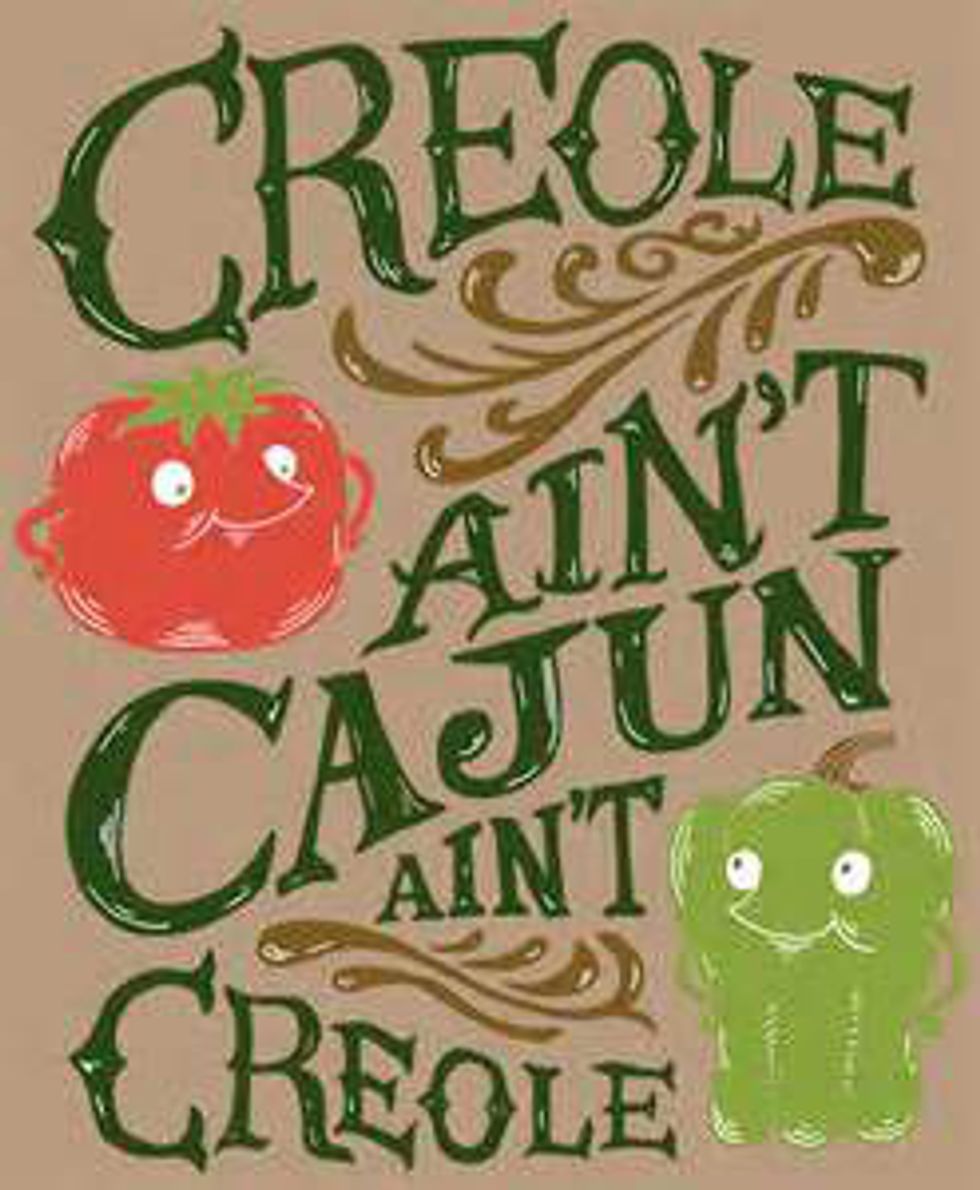“Creole” and “Cajun” are two terms that you hear often in Louisiana, especially in reference to food. Sometimes, they seem to be used interchangeably even though they are not at all the same thing. Cajun and Creole are two distinct cultures. It has been said that a Cajun can feed three families off one chicken while a Creole can feed one family off three chickens. This is because the Cajuns were very resourceful, generally cooked meals in one large pot, didn’t have access to many luxuries, and lived off the land as it changed according to the season while Creoles had many luxuries, servants that made the food, access to local markets, and lived a wealthy city lifestyle. Even though there are great distinctions between the two types of cooking, both cultures take their food seriously and love to cook and eat.
Cajun: The word Cajun originates from the term les Acadians. This term described the French colonists who settled in the Acadia region of Canada. The Acadians were forced out of their Canadian homes in the early 1700s during the British conquest of Acadia. Many Acadians settled in the swampy region of Louisiana, which is present day Acadiana.
The Acadians created a unique cuisine by using their resources wisely. They took full advantage of the swamps, bayous, and wild game. The Cajuns lacked refrigerators, which forced them to find other ways to use and preserve every bit of their slaughtered animals. They would put pig liver in the Boudin and use salt and smoke to preserve the Tasso and Andouille. They were also short on the luxury of time, so their cooking was mainly done in one big pot full of lots of spice and local seasonal ingredients (so you can thank the Cajuns for crawfish boils!). The Cajun social culture was largely based around preparing, sharing and enjoying food with others. Cajun food was simply known as “country food” since the Acadians were located in the rural areas of southern Louisiana.
When most people think “Cajun” they think spice. But Cajun food is much more than just a lot of cayenne pepper. The base of most Cajun dishes begins with “the holy trinity of Cajun cuisine”, which uses onion, celery, and bell pepper rather than carrots like in the French mirepoix. Some other Cajun spice necessities include garlic, paprika, thyme, parsley, filé (ground sassafras leaves) and green onions.
Creole: Creole refers to the original European settlers of New Orleans. These were mainly wealthy families that were French or Spanish that had the means to hire chefs from Madrid and Paris. The term Creole also grew to include native-born slaves and free people of color. Creole cooking is more refined, delicate, and luxurious. In the early days, the slaves of these wealthy people would have an abundance of time and an array of resources to prepare meals. The emphasis is less on spices like cayenne pepper and filé powder and more on cream, butter, tomatoes, and herbs. Therefore, Creole cooking resulted in rich, time-intensive soups and sauces, elegant pureed bisques, and desserts. For example, a remoulade sauce consists of over a dozen ingredients, which would not exist in a Cajun kitchen.
The Creoles had access to what were considered exotic ingredients at the time – like tomatoes and dairy. This is why a Creole roux is made with butter and flour, while a Cajun roux is made with oil and flour. This is also why Creole jambalaya contains tomatoes while Cajun jambalaya does not. The creole gumbo has more of a tomato base while a Cajun gumbo has a roux base.
Creole and Cajun are two separate cultures that have different histories, cooking styles, ingredients, and spices. I’m personally very grateful to have both of these cultures because it adds so much variety to present day Louisiana cuisine. What is your favorite Cajun dish? What about Creole? Let me know in the comments below!






















